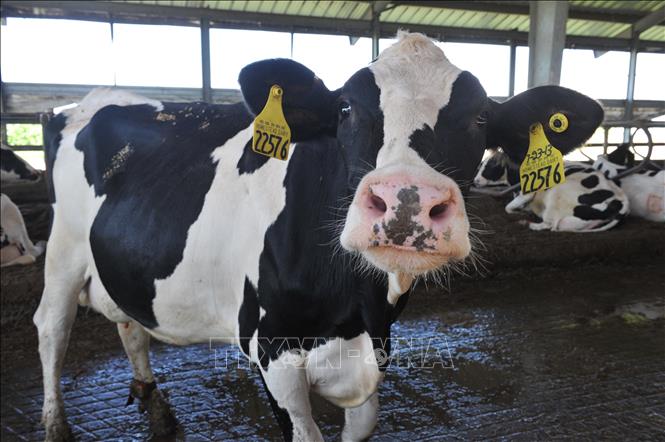Outbreaks of avian influenza in dairy cows in the US have now been confirmed in Minnesota and Iowa, bringing the total number of affected states to 11. US government officials have asked these states to increase testing.

Dairy cows are raised on a farm in Porterville, California, USA. Image: AFP/TTXVN
More than 80 dairy herds and three dairy workers have tested positive for the virus since late March. Other states reporting cases include Colorado, Idaho, Kansas, Michigan, New Mexico, North Carolina, Ohio, South Dakota and Texas. Scientists have provided guidance on what to know about the outbreak.
Why bird flu is a concern
Health officials say the risk to the public remains low. But the spread of bird flu in dairy cows reflects a wider range of mammals that can be infected with the virus, which normally infects birds. Flu experts say human infections with bird flu are a concern.
Scientists are on alert for changes in the H5N1 strain that could signal its ability to spread easily between people. The virus has caused severe or fatal infections in people who have had close contact with wild birds or poultry and has long been on the list of viruses with pandemic potential. Any spread to a new mammal species is worrying. The infections in livestock are from the same avian influenza subtype that has been infecting wild birds and poultry globally for more than two years, killing some mammals, likely by eating sick or dead birds.
H5N2 infection in Mexico
This week, the World Health Organization (WHO) reported the death of a person in Mexico with serious health problems who had contracted H5N2 bird flu. This is the first time the H5N2 bird flu virus has infected humans globally and the first reported case of H5 in humans in Mexico. It is not yet clear how the person became infected. Mexican officials said the man died of other health conditions, while the WHO said the death was due to a combination of factors.
The H5N1 virus currently infecting dairy cows in the United States belongs to a subgroup known as clade 2.3.3.4b.
Although avian influenza primarily infects and kills birds, human infections can occur and cause serious or fatal infections. Recent human infections with avian influenza subtypes other than H5N2 in Mexico include a case involving a different H5N1 subtype in Australia and a case of H5N6 in China in May.
Scale of avian influenza outbreak in dairy cows
The full extent of the outbreak is still unknown, and the actual number of infected cows is likely to be higher than documented. The US Food and Drug Administration (FDA) said it detected traces of the H5N1 virus in about 1 in 5 samples in a nationwide survey of retail milk. US health officials believe people cannot get sick from drinking pasteurized milk, but advise against drinking raw milk.
The virus may also be present in cows that show no signs of infection.
How did H5N1 spread in the US?
It is not yet clear how the virus spreads, but there is evidence of transmission from wild birds to cows, from cows to other cows, from cows to poultry, and in three cases from cows to humans. There is currently no evidence of human-to-human transmission.
Because of the high concentrations of the virus in cow milk and mammary glands, scientists suspect that the virus may spread to other animals during milking. It is not yet known whether the virus can spread to cows through respiratory droplets, as influenza viruses typically do in humans, but research is ongoing.
Scientists believe that it is more likely that farm workers are infected through contact with contaminated milk. Symptoms in humans include conjunctivitis (red eyes) and mild respiratory symptoms.
Is there a bird flu vaccine for humans?
The United States maintains a stockpile of pre-pandemic vaccine candidates and bulk vaccines against various strains of influenza. Last month, U.S. officials announced they had decided to mass-produce a vaccine closely related to the H5N1 virus, which is expected to yield 4.8 million doses.
Thanh Tùng (TTXVN)
